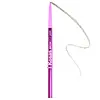What's inside
What's inside
 Key Ingredients
Key Ingredients

 Benefits
Benefits

 Concerns
Concerns

 Ingredients Side-by-side
Ingredients Side-by-side

Hydrogenated Coco-Glycerides
EmollientEuphorbia Cerifera Wax
Zinc Stearate
Cosmetic ColorantCopernicia Cerifera Wax
Synthetic Japan Wax
EmollientMica
Cosmetic ColorantPalmitic Acid
EmollientStearic Acid
CleansingTriethoxycaprylylsilane
Polyhydroxystearic Acid
EmulsifyingTocopherol
AntioxidantLecithin
EmollientEthylhexyl Palmitate
EmollientIsostearic Acid
CleansingIsopropyl Myristate
EmollientPolyglyceryl-3 Polyricinoleate
EmulsifyingWater
Skin ConditioningGlyceryl Caprylate
EmollientCaprylyl Glycol
EmollientIron Oxides
CI 77891
Cosmetic ColorantHydrogenated Coco-Glycerides, Euphorbia Cerifera Wax, Zinc Stearate, Copernicia Cerifera Wax, Synthetic Japan Wax, Mica, Palmitic Acid, Stearic Acid, Triethoxycaprylylsilane, Polyhydroxystearic Acid, Tocopherol, Lecithin, Ethylhexyl Palmitate, Isostearic Acid, Isopropyl Myristate, Polyglyceryl-3 Polyricinoleate, Water, Glyceryl Caprylate, Caprylyl Glycol, Iron Oxides, CI 77891
Hydrogenated Vegetable Oil
EmollientPolyethylene
AbrasiveParaffin
PerfumingEthylhexyl Palmitate
EmollientStearic Acid
CleansingHydrogenated Microcrystalline Wax
Emulsion StabilisingPolyglyceryl-2 Triisostearate
EmulsifyingSorbitan Stearate
EmulsifyingPalmitic Acid
EmollientEthylhexylglycerin
Skin ConditioningPhenoxyethanol
PreservativeMica
Cosmetic ColorantCI 77891
Cosmetic ColorantIron Oxides
CI 77510
Cosmetic Colorant
 Reviews
Reviews

Ingredients Explained
These ingredients are found in both products.
Ingredients higher up in an ingredient list are typically present in a larger amount.
Ci 77891 is a white pigment from Titanium dioxide. It is naturally found in minerals such as rutile and ilmenite.
It's main function is to add a white color to cosmetics. It can also be mixed with other colors to create different shades.
Ci 77891 is commonly found in sunscreens due to its ability to block UV rays.
Learn more about CI 77891Ethylhexyl Palmitate, also known as octyl palmitate, is created from 2-ethylhexyl alcohol and palmitic acid. It is a fatty acid ester.
The fatty acid content of Ethylhexyl Palmitate makes it an emollient. Emollients help soften and hydrate your skin by trapping moisture within.
Ethylhexyl Palmitate is also used to help improve the texture of cosmetics. It helps other ingredient dissolve in products and help disperse ingredients more evenly.
You'll likely find this ingredient in sunscreen, as it is often used to mix UV-blocking ingredients such as avobenzone and ethylhexyl triazone.
It can also help stabilize the fragrances in a product as a fragrance fixative.
Ethylhexyl Palmitate can be used to substitute mineral oil.
Due to its high fatty acid content, it may not be fungal-acne safe.
Learn more about Ethylhexyl PalmitateMica is a naturally occurring mineral used to add shimmer and color in cosmetics. It can also help improve the texture of a product or give it an opaque, white/silver color.
Serecite is the name for very fine but ragged grains of mica.
This ingredient is often coated with metal oxides like titanium dioxide. Trace amounts of heavy metals may be found in mica, but these metals are not harmful in our personal products.
Mica has been used since prehistoric times throughout the world. Ancient Egyptian, Indian, Greek, Roman, Aztec, and Chinese civilizations have used mica.
Learn more about MicaPalmitic Acid is a fatty acid naturally found in our skin and in many plant and animal sources. In cosmetics, it is usually derived from palm oil. It serves many purposes in skincare, acting as a cleanser, emollient, and emulsifier.
As an emollient, palmitic acid helps soften and smooth the skin by preventing water loss. In cleansers, it helps remove oil and dirt while creating foam.
Its emulsifying properties help stabilize products by keeping water and oil-based ingredients from separating.
This may not be suitable for fungal acne-prone skin, as fatty acids like this can sometimes trigger breakouts in sensitive individuals.
Learn more about Palmitic AcidStearic Acid is a fatty acid. It is an emollient, emulsifier, and texture enhancer.
As an emollient, stearic acid helps soften skin. It aids the skin's protective barrier by preventing water loss. It also provides a gentle cleansing effect without stripping away natural oils.
Stearic acid may also be used to enhance the texture of products. It can add volume and stabilize ingredients such as water and oil. This can help water and oil ingredients from separating.
Sources of stearic acid include animal or vegetable fats/oils such as coconut or shea. It can be naturally found in butter, cocoa butter, shea butter, vegetable fats, and animal tallow.
This ingredient may not be Malassezia folliculitis, or fungal-acne safe.
Learn more about Stearic AcidThis ingredient is a combination of red, black, and yellow iron oxide pigments. This combination of colors is usually found in foundation, because it results in a "skin" color.